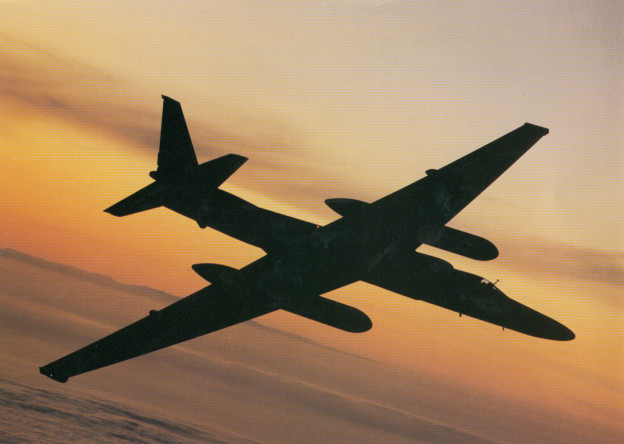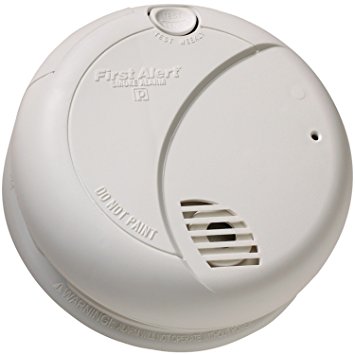I count myself among the few lucky enough to have experienced piloting an aircraft above 70,000 Feet (close to 15 miles above the earth’s surface).  The U-2 Dragon Lady is the only operational air breathing aircraft currently capable of reaching such altitudes. It is also an aircraft of notoriety as a result of the Soviet Union shooting one down on May Day 1960 and detaining the pilot, Gary Powers. The incident was a core component to the plot for the recent film titled, “Bridge of Spies.”
The U-2 Dragon Lady is the only operational air breathing aircraft currently capable of reaching such altitudes. It is also an aircraft of notoriety as a result of the Soviet Union shooting one down on May Day 1960 and detaining the pilot, Gary Powers. The incident was a core component to the plot for the recent film titled, “Bridge of Spies.”
Part of the interview process for becoming a U-2 pilot required prospective pilots to fly a two seat version of the aircraft in order to demonstrate flying skills needed to handle the unique characteristics of the Dragon Lady. A high altitude flight was not part of the interview process when I became a U-2 pilot in 1988. I got my first glimpse of the upper atmosphere during initial qualification training. Until then, I was eager to know what it was like to be up so high. In fact that is the question I still hear most from the people I meet who have some familiarity with the U-2.

The question, “What is it like to be up so high?” has many possible answers. A good friend and fellow U-2 pilot once told me he that to answer such a question is to attempt to explain the color blue to a blind person. Though I think he may be correct, I still allow myself to wonder about all the variations of such descriptions. To begin with, the air at those altitudes is so rarified that it takes an extraordinary aircraft to generate sufficient lift to operate up there. One could write a dissertation on that subject alone. However, I chose to keep my descriptions straight forward. Consider the following as one of the explanations I can offer:
“When you look up to the sky on a clear blue day and see contrails crisscrossing the cerulean emptiness and your eyes follow them to the speck of an aircraft at the front end of one, you’re probably looking at an airliner traversing the stratosphere somewhere between Flight Level 390 and FL430. If you were in a U-2 looking down, the view would be similar, a contrail and a speck of an aircraft at the head of it, the only difference being a backdrop of earth – flat with features both cultural and natural, all blending into one.”
Until flying over the Southwest Asian peninsula during the winter of ’90 -91, my experience with wind at altitude in a U-2 consisted of either one of two types of conditions; light and variable or vertical and violent. Over Southwest Asia during winter, I experienced a westerly jet stream that pushed my aircraft sideways over the ground in excess of 180 knots, causing some navigational and mission challenges.
The wind conditions of the stratosphere are influenced by a variety of factors to include latitude, outside air temperature, and seasonal weather patterns that occur in the lower atmosphere. Over the years, I’ve heard non-flyers and pilots of other aircraft suggest that the U-2 isn’t really a combat aircraft and that the pilots who fly them are rarely in danger. Those types of comments couldn’t be farther from reality, but to argue with the ignorant could easily be misunderstood as giving in to the possibility that they may be right.
There have been more than a reasonable proportion of non-combat fatalities among those who’ve flown the U-2. One of the “too many” that stands out in my recollection was a fellow pilot who was forced to eject from his aircraft one winter night over the sea of Japan. Asia’s winter jetstream creates a mountain wave of moving air that becomes increasingly exaggerated with every thousand feet of altitude. When this airmass crashes into another of radically different density over Asia’s Pacific Coastline, the ride can be sporty and dangerous. At the altitudes the U-2 flies, where the airspeed margin between stall and the aircraft’s structural limit is roughly 2 knots, our brother U-2 pilot’s aircraft broke apart as a result of exceeding one or the other parameter while accidentally and unexpectedly flying in extreme turbulence.
I sometimes think about what it would have been like to eject from a jet flying 15 miles above the earth. The U-2’s ejection system is set-up so that the pilot remains attached to the ejection seat, and all the life support equipment needed to keep him alive until reaching a safe altitude for parachute deployment – normally this occurs below 20,000 feet which means the pilot, while still buckled into the seat falls to earth – face down because the seat’s drogue chute would be deployed to stabilize the pilot and seat to keep everything from tumbling. The system designers knew a pilot would need to be able to see, so they incorporated battery powered face heat into the pilot’s helmet to keep the face shield from icing over.
It is possible to get into the math in detail to figure out just how long of a drop it would be for a U-2 pilot ejecting at altitude. The NASA website has an entire presentation devoted to calculating terminal velocity of a falling body to include a drag coefficient. To get a rough estimate though, let’s say that an object free falling through 50K feet will consume about 9,000′ per minute, taking a little over 5 minutes. When you include the drag coefficient, i.e. the pilot, the seat, and most importantly, the drogue chute, the interval can be increased by a substantial margin . I’m guessing it is double, meaning there is a good bit of time to contemplate the view.
Most U-2 missions, particularly those flown during the “Cold War” era, were not classified as combat operations. However, they were and still are conducted in an extremely hostile environment. For starters, the pilot must wear a full pressure suit of the variety worn by astronauts. Why? Because above 50,000 feet or so, the density of the atmosphere is so low that gas bubbles out of solution – in short a human’s blood would boil. The U-2’s cockpit is pressurized, but not anywhere near that of a passenger jet flying at FL430. The suit is a precaution against cabin depressurization (regardless of the reliability of the aircraft, it happens often enough to be thankful for the protection of the suit).
The U-2 pilot breathes 100% oxygen for the duration of the mission as well as an additional  “pre-breathing” period to purge nitrogen from the bloodstream as a measure to combat against decompression sickness to the central nervous system. Breathing 100% oxygen for extended periods is not toxic to the human body either (something Weir got wrong in his novel The Martian). Since this practice can lead to dehydration, a U-2 pilot carries and consumes a minimum of 1 quart of water per hour. After one of the 11+ hour missions I’d flown in my early days, I recall seeing one of our life support crew counting the 12 empty plastic bottles as he pulled each of them from the cramped spaces of the cockpit that I’d been confined to for the better part of a day.
“pre-breathing” period to purge nitrogen from the bloodstream as a measure to combat against decompression sickness to the central nervous system. Breathing 100% oxygen for extended periods is not toxic to the human body either (something Weir got wrong in his novel The Martian). Since this practice can lead to dehydration, a U-2 pilot carries and consumes a minimum of 1 quart of water per hour. After one of the 11+ hour missions I’d flown in my early days, I recall seeing one of our life support crew counting the 12 empty plastic bottles as he pulled each of them from the cramped spaces of the cockpit that I’d been confined to for the better part of a day.

The above are just a few of the many anecdotal experiences a U-2 pilot might share. I’ll close with a recommendation that will hopefully provide some additional perspective about wind, water, and what it is to be a part of humanity. When I was an undergraduate student back in the late ’70s, I stumbled on a film featuring Apollo 9 astronaut Rusty Schweickart, explaining his perspective while looking at the earth from space. The original film was titled, “No Frames, No Boundaries” and can be viewed here (Imagery footage begins at 40 seconds from beginning). I admire so much the words and perspective Mr. Schewickart offers – in his own words years later, that perspective just gets better.



